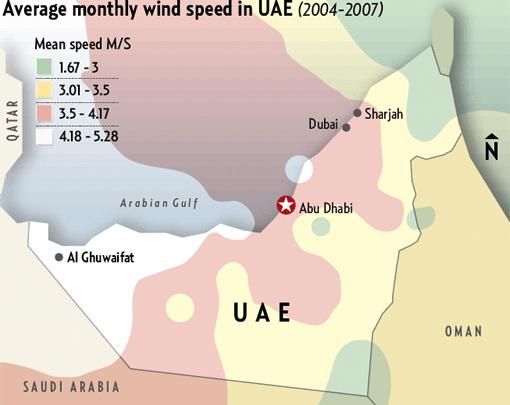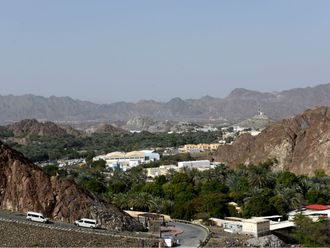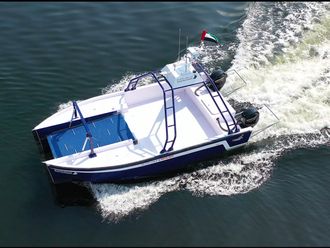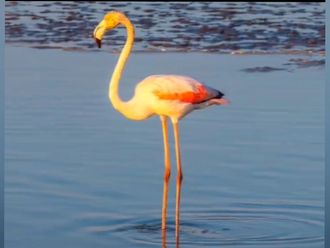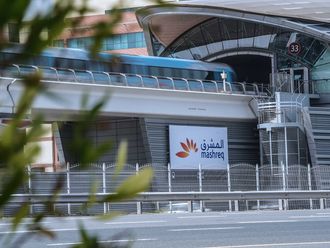Al Ain: Winds farms can be established along the north-western coastal areas of Abu Dhabi to harvest wind energy, according to new UAE University research, which notes that the area has sufficient year-round average wind speeds.
The areas have also been evaluated as per their energy generation capacity and proximity to centres of demand - such as urban and agricultural hubs, ports, refineries, airports, roads, and transmission lines, said the researcher.
Based on geographic information systems (GIS), weather and satellite imagery, the study found an average monthly wind speed of 4.18 to 5.28 metres per second (m/s) in the identified area, said UAE University researcher Dr Mohammad Yagoub.
An Associate Professor of Remote Sensing and GIS at the Department of Geography Dr Yagoub is also an expert in renewable energy. He said the wind's energy can be utilised for diverse uses such as water pumping, lighting up highway signs, and GSM stations.
The study, which was done before the UAE won its bid to host the headquarters of the International Renewable Energy Agency (Irena), has recently been released by the UAEU.
"The objective of this study is to identify suitable areas for wind energy generation in the UAE using remote sensing and GIS multi-criteria decision analysis," he said.
For the research and analysis, four years (2004 to 2007) mean monthly wind speed data was collected from 34 meteorological stations in the UAE and used to assess the available wind power potential through the GIS analysis.
"Maximum wind speed [gust] ranges between eight m/s and 14 m/s. This speed together with the minimum speed can be put into account in turbine design cut-in and cut-out speed'," he said, adding new wind turbines are available that can start at only four to five m/s wind speed. The integration of the wind power with the power grid requires further investigation.
The principal influences on the atmospheric pressure patterns of the UAE, he said, are the Siberian anticyclone (area of high pressure) in winter, and in summer the Asiatic low centred over central and southern Asia extending a broad belt across the continent at approximately 30 degrees north.
The secondary influence comes from the Azores high pressure cell in summer and from the African low pressure cell in winter. Latitude has also influence in the atmospheric pressure.
"Laying near 30 degrees north the UAE is directly under the sub-tropical [jet stream convergence zone] anticyclone, known as low-altitude or the Hadley cell. There is a tendency for wind to be stronger between March and August and the prevailing wind direction is from the north-west," said the researcher.
Dr Yagoub said renewable energy, such as wind, solar, water and biomass, is becoming an important area of research.
"In the UAE, there is a high potential of using solar energy and wind power for the generation of electricity that can be utilised to meet the increasing demands arising from population increases and rapid development."
What are the main challenges with adopting alternative sources of energy? Are you aware of any other places that have successfully switched to renewable sources of energy?


